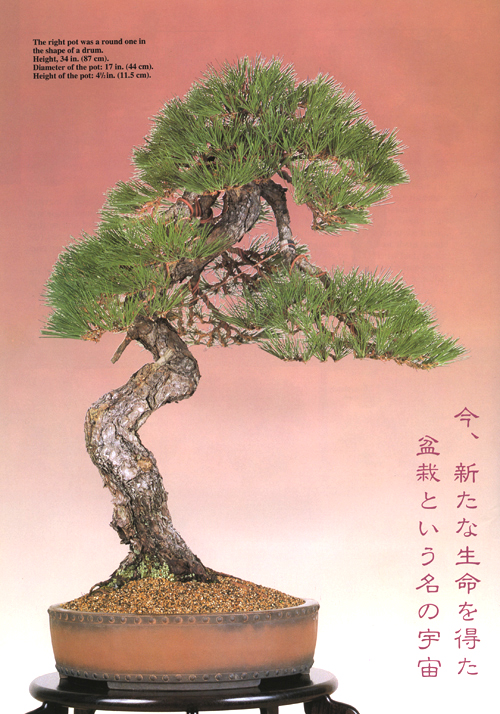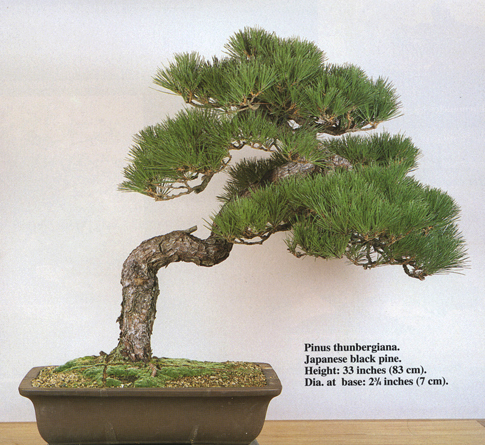
After. The trunk is strong and fluid, the overall balance is good and the new pot is suited to bunjin style. By Furube Tetsuyi. From Bonsai Today issue 33. See below for the before photo.
Changing the potting angle and rotating the trunk
Though Mr. Tetsuyi did a few other things, the most obvious (aside from the new pot) is the fairly radical change in the planting angle. This along with rotating the trunk to soften the sharp almost 90 degree angles, are the first two major steps in restyling this old tree. The final steps involve pruning and wiring the branches back into shape, reducing the needle size (on ongoing project with black pines), and repotting into a suitable pot (see Bonsai Today issue 33 for all the steps).

Before. Though the stock shows age and has lots of potential, there are so many things that need help. If we accept this view as the front, then it’s easy to see that the tree is quite unbalanced (as it’s planted now, I don’t think any other view would be much better). Also, the first curve in the trunk presents problems with its 90 degree change in direction (the Japanese call that soft 90 degree angle ‘pigeon’s breast’). Then there’s the issue of taper. Though taper isn’t as important in bunjin as in other styles, still, if you look at the after photo above, you’ll see how the trunk shows a subtle but pleasing taper, especially in the top two thirds (mostly hidden in the before photo). Finally, the canopy is overgrown, the needles are too long and the pot doesn’t suit the tree.
Excellent. A big improvement and now it is a beautiful tree.
Thanks Hansie,
And yes, I agree 100%.
What a great example of how a change of perspective and a more suitable pot can dramatically improve on the overall aesthetics.
Thanks Thor,
Yes. The art of recognizing the potential of a tree and the skill to execute the transformation. If you look at the original Bonsai Today article you can see how he took the time to explore various planting angles until he got it just right.
Lots of Ponderosa pines and Rocky Mountain Juniper yamadori have these defects. I imagine a treatment like this could also help with these often “flawed” trees.
Hi Owen,
Yeah, the notion of what’s flawed and what isn’t might be worth a discussion sometime. Many Japanese bonsai artists have pretty clear guideline on the subject, yet at times, you’ll see them defy their own logic. Maybe it’s just a matter of letting the tree speak to you (paying attention) and then doing what you can to enhance the tree’s natural beauty.